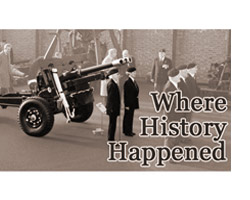The nation has quite rightly been remembering and marking the 100 year anniversary of the outbreak of the First World War. For young people in the North East it has been important to help them understand the impact war had so many years ago and, for the most part, so many miles from the front line.
But in December 1914 that front line was brought to the streets of Hartlepool, where German battleships fired on the town killing over 100 people.
To mark the centenary of the bombardment a special event has taken place at the town’s College of Further Education, with music, art, poetry, talks and displays – and featuring a contribution from the young people of Throston.
They live in Hartlepool just a couple of miles from where the shells landed and over the past few months have learned so much about the events that affected their home town and still influences their lives today.
They visited the Heugh Battery, which fired back at the German navy, to discover more about the shelling and also the contribution thousands of women in the North East made to the war effort through their work in munitions factories. A woman’s place in society would never be quite the same again.
They went to Beamish Museum where they met local Trench Art collector Judy Sunter who told the story behind real war objects – such as gas masks – and about the art influenced by them. At Beamish they were also treated to a behind the scenes tour by Michelle Ball, from the museum’s Learning and Community Participation, who told them how items are collected, recorded and stored.
She was also able to provide a hands-on heritage experience using objects from the life of Northumberland Fusilier Lt Reginald Elphinstone Baty, who was awarded the Military Cross in 1917 during a raid on a German trench. Although he was wounded, the following year Lt Baty joined the Royal Flying Corps – the predecessor of the Royal Air Force.
The starting point of the young people’s exploration of the First World War was through A Soldier’s Life and The Home Front resource boxes designed by Hartlepool Cultural Services.Through their learning and discussions about life and death, propaganda, the Hartlepool bombardment and Trench Art, they developed their own art and understanding of what it meant to live and fight through a war, and how – even in the most desperate situations – people will turn to art to find expression.
You can read more about the historical background of the bombardment here.

